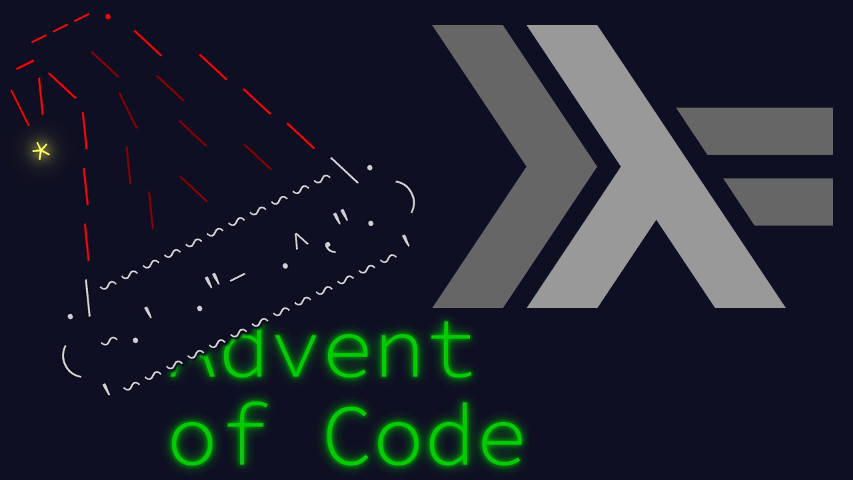We’re still on Advent of Code, and today’s puzzle, “Print Queue”, is rather interesting, in that it was very good at doing something I typically adore AoC for even though it caught me by surprise way more times than I’m willing to admit: tilting the scales.
How was it surprising? It’s a matter of expectations.
A significant1 portion of the attendance is programming competition regulars. Those are people looking for competition, familiar with a few formats close to that of AoC. They’re trained for competing, are good at it, they’re the people you typically see on top of the daily leaderboard, as well as other programming competitions.
AoC has blatant similarities with the usual (programming competition) suspects, but has a notable difference that Eric was always quite vocal in defending: the problem is individual.
What does that mean? In a typical programming competition, there is a problem statement, an expectation you’re to write some code to convert some input into some output, usually judged as a crude function to a very small codomain: it’s either correct or it isn’t. The statement gives (or tends to, at least) some real-world storytelling about a down-to-earth math problem. A “limits” or “constraints” section is a common staple, giving you a more numerical expectation of what’s to be expected from the input.
And that’s the important part. You’re given an expectation of what to expect from the input. But you’re not 2 given that input. The input will be the typical worst case of what to expect to remain compliant with both the problem statement and the constraints.
That’s not the case in AoC. In AoC, the goal is explicitly to solve for your puzzle input. Which may involve actually looking at your problem input.
So, the problem statement never3 lies, and neither does the ground-truth problem input; yet either are quite commonly misleading. I.e., the problem input for a given problem statement is very commonly not a worst case.
We’ll see exactly by how much after the code. Until then, let’s have our usual literate Haskell imports.
import Data.Graph (graphFromEdges,reverseTopSort)
import Data.List (partition)
import Data.List.Split (wordsBy)
import qualified Data.IntMap as Map
import qualified Data.IntSet as SetSo.
We’re given a list of page-to-page precedence constraints and a [list of] list of pages, and asked to ensure any such list respects the precedence constraints. Any CS major will tell you this screams topological sort all over.
What’s a topological sort? Nothing more than an ordering that satisfies given pairwise ordering constraints.
For part 1, we’re not that deep in CS theory yet. We’re only to assert whether a given ordering actually satisfies the constraints.
How do we do that? Let’s try for as greedy as possible: what does it take, given an assumed-valid prior input, to accept a new page to the end of the list?
Page constraints are pairwise, so adding a new page can only have two sides: either that new page is a problem as the predecessor side, or it is as the successor side. But it can’t be a predecessor-side issue yet, as there’s no successor to conflict with yet. What conflict could it possibly get into on the successor side?
Adding a page to a presumed-valid ordering can break if that new page is present in the constraint ordering as a successor of a page that is already a part of the (presumed valid) ordering. So adding that page to the ordering would create a (successor,predecessor) pair that is invalid.
So that’s a path to an algorithm.
We can greedily read a page number at a time, accepting it only if it is never a predecessor to a pair ordering whose successor we’ve already seen in the list. In other words, we can maintain a set of forbidden pages, initially empty. So we can only add a page to the ordering if it’s not a predecessor to a page we already saw. And after adding it, we can henceforth exclude any predecessor it might be known to have.
Which brings us to input parsing. We’ll want to know what known
predecessors a given successor page has, so we’ll aggregate those as a
Set. The list of test cases is parsed as a list, no
surprise there.
parse :: String -> (Map.IntMap Set.IntSet,[[Int]])
parse s = (rules,updates) where
[rawRules,rawUpdates] = wordsBy (== "") (lines s)
parseRule l = (b,Set.singleton a) where [a,b] = read <$> wordsBy (== '|') l
rules = Map.fromListWith Set.union (parseRule <$> rawRules)
updates = map read . wordsBy (== ',') <$> rawUpdatesThe problem workhorse, assessing orderlyness. Implemented, as said, as a forward scan. We’re adding pages one by one, only rejecting if the new page introduces an incompatibility. A page can never introduce an incompatibility as a predecessor, so we only keep track of pages in a sucessor relationship, lest we notice their partner predecessor later along the way.
isOrdered :: Map.IntMap Set.IntSet -> [Int] -> Bool
isOrdered rules = go Set.empty where
go _ [] = True
go forbidden (p:ps)
| p `Set.member` forbidden = False
| otherwise = go forbidden' ps where
forbidden' = Set.union forbidden $
Map.findWithDefault Set.empty p rulesWe’re keeping those orderings that validate, and keeping their middle element as proof.
middle :: [a] -> a
middle l = l !! (length l `div` 2)This solves part 1.
For part 2 we’ll want to correct.
What’s interesting is the problem asks for “the” correct ordering’s middle element. And while there existing some correct orderings isn’t too surprising given the form of the inputs, it’s not as obvious they should all have the same middle element so as to be recognized by the site puzzle logic.
Yet… we’re allowed to assume good faith. The problem statement asks for something; it’s not directly a problem for that requested something to be seemingly impossible to generate input data for, as long as the web interface accepts my result data.
So I’ll leave the structure of the input as an unexplored rabbit hole for today, but do encourage you to explore it on your own.
Back to solving. One “correct” way to go is definitely the page pair set’s topologial ordering we mentioned earlier, more or less by definition. As we already parsed the input as successor to predecessor relationships, so we might as well use that and use a reverse topological sort ordering instead.
I’m not going to expand on the actual algorithm for topological sort: it seems like it’s so boring it actually made it to the Haskell standard library by now.
makeOrdered :: Map.IntMap Set.IntSet -> [Int] -> [Int]
makeOrdered rules update = map keyFromVertex (reverseTopSort (graph)) where
updateSet = Set.fromList update
mkEdges page =
( ()
, page
, Set.elems $
Set.intersection updateSet $
Map.findWithDefault Set.empty page rules
)
(graph,nodeFromVertex,_) = graphFromEdges $ map mkEdges update
keyFromVertex v = let (_,key,_) = nodeFromVertex v in keyAnd there you have it. A solved day 5. Only lacking a trivial wrapper to get things going our way:
main :: IO ()
main = do
(rules,updates) <- parse <$> getContents
let (ordered,unordered) = partition (isOrdered rules) updates
print $ sum $ middle <$> ordered
print $ sum $ middle . makeOrdered rules <$> unorderedThank you for following along, and see you tomorrow!



